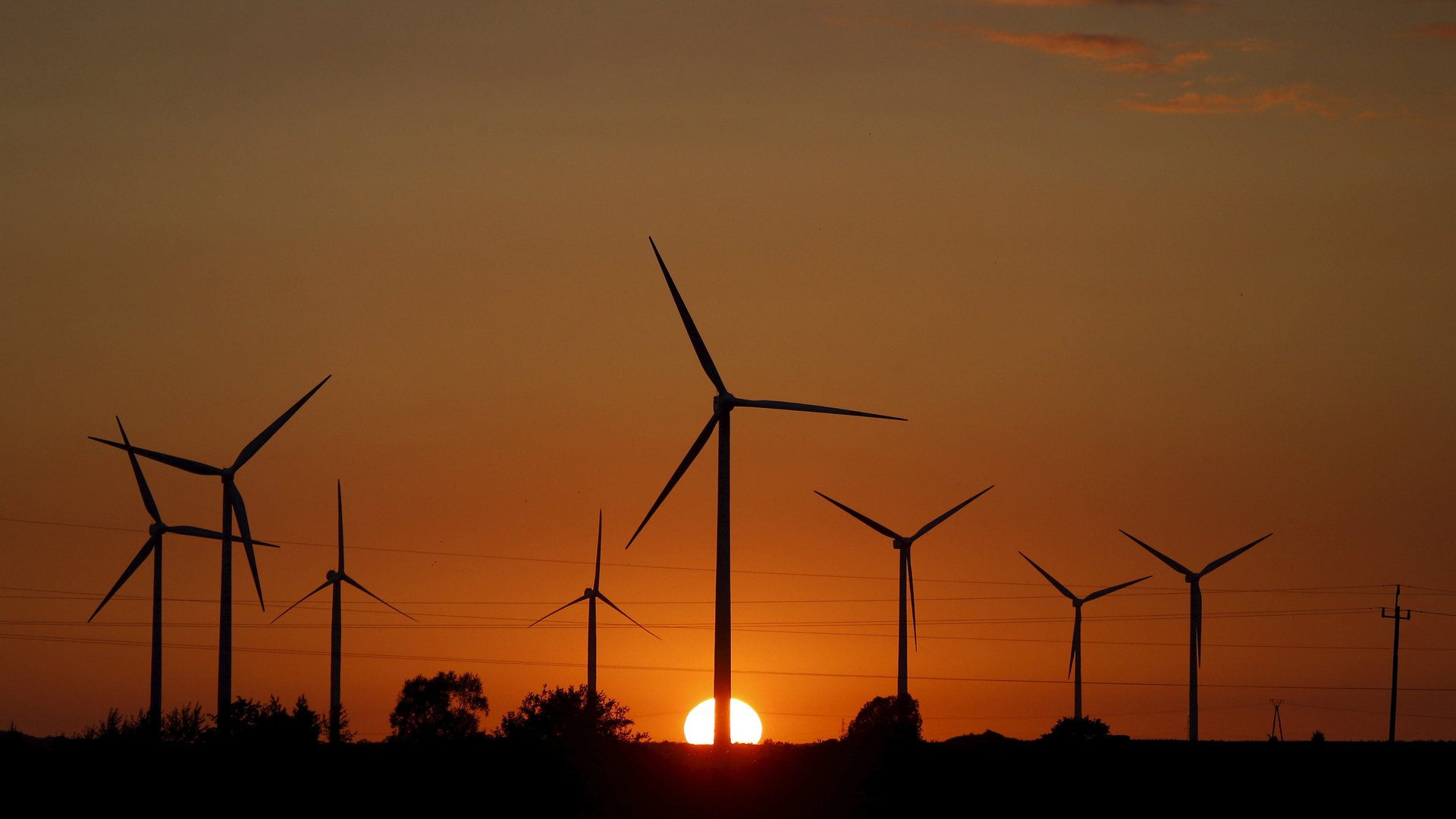At Davos, it’s time for the big money to make a big bet on slowing climate change
Last year climate change figured prominently at the financial confab. Now that there’s a historic agreement to limit emissions, attention should turn to the only source of funding big enough to put words into action: Pension funds and insurance companies.


Last year climate change figured prominently at the financial confab. Now that there’s a historic agreement to limit emissions, attention should turn to the only source of funding big enough to put words into action: Pension funds and insurance companies.
As the world’s money elite gathers in Davos this week, attention should turn to the only pool of long term capital that can realistically be deployed on such a scale to make a transition to renewable energy possible: the money found on the balance sheets of pension funds, insurance companies, and endowments.
Last year climate change was a main focus of the World Economic Forum’s annual conference in Davos. In December we saw a historic agreement reached in Paris where every nation pledged to cut carbon dioxide emissions.
Yet the challenge of financing renewable energy on the scale needed to ward off the worst effects of climate change is absolutely astounding. Currently about $300 billion is spent on renewables each year. That will have to be doubled or tripled over the next decade if warming is to be kept under 2 °C. This level of financing goes beyond the means of governments and of investors specialized in renewable energy.
Globally, institutional investors hold approximately $80 trillion dollars of assets, including $45 trillion dollars on the balance sheets of insurance companies ($25 trillion), pension funds ($20 trillion), and sovereign wealth funds ($5 trillion). Overall they represent nearly a third of global financial assets.
These funds are looking for investments that match their long-term liabilities such as pension obligations or insurance pay-outs. Traditionally, they have focused their investments on bonds and real estate. But renewable energy constitutes an ideal investment for them.
We are not talking about buying companies that make innovative solar panels or wind turbines. We’re talking about buying actual solar or wind farms that produce electricity. These are projects that are built to last for decades and have predictable revenue streams guaranteed by contract. Twenty-year solar projects in the US with limited construction and other risks return over 10% per year. Even more conservative project structures still return 6-8% annually. This beats the returns of the bond market and most real estate strategies.
As additional capital is channeled towards the deployment of solar and wind, technological progress will increase the bang for the buck. From 2011 to 2014, cost reductions and new technologies meant every dollar spent on renewable energy yielded 35% more power. If this trend were to continue, a dollar will buy 11% more renewable electricity generation every year. This means doubling the impact of a dollar spent on renewables every 7 years. That means, if investment in renewable energy is tripled by 2025, the increase in electricity generation would be over eight fold.
Unfortunately, institutional investors have been slow to make these investments. They currently only account for a fraction of the money the sector receives every year. This is because they lack the teams and expertise to conduct the due diligence on these investments. They have preferred to focus on real estate, bonds, and sometimes infrastructure where they have a better understanding of the market.
To seize the renewables opportunity, and to contribute to solving the biggest challenge the world has ever faced, institutional investors will need to get serious about deploying capital. This means building up investment teams and changing governance structures and investment allocation rules. Regulators will also have a role to play, giving the green light to insurance companies and pension funds to hold renewable assets on their balance sheets.
Some pension funds are early movers and have created renewable energy teams to support ambitious programs. In Denmark, for instance, the main pension fund has already invested over a billion dollars into wind farms and other renewable energy assets.
We hope that the pension fund and insurance company executives meeting in Davos this week will consider this idea—the opportunity to invest in a new asset class that perfectly matches their risk profile and investment horizon. By entering the space today, they will also earn the distinction of having contributed to solving the greatest challenge of our time.